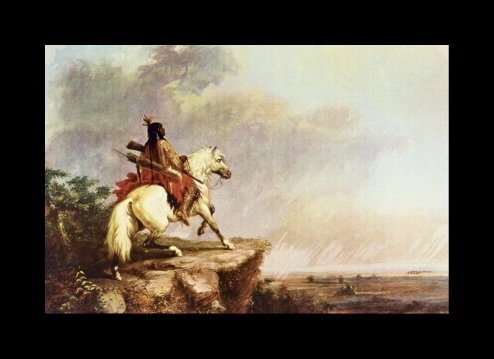Alfred Jacob Miller (1810-1874)
Get a Miller Certificate of Authenticity for your painting (COA) for your Miller drawing.
For all your Miller artworks you need a Certificate of Authenticity (COA) in order to sell, to insure or to donate for a tax deduction.
Getting a Miller Certificate of Authenticity (COA) is easy. Just send us photos and dimensions and tell us what you know about the origin or history of your Miller painting or drawing.
If you want to sell your Miller painting or drawing use our selling services. We offer Miller selling help, selling advice, private treaty sales and full brokerage.
We have been authenticating Miller and issuing certificates of authenticity since 2002. We are recognized Miller experts and Miller certified appraisers. We issue COAs and appraisals for all Miller artworks.
Our Miller paintings and drawings authentications are accepted and respected worldwide.
Each COA is backed by in-depth research and analysis authentication reports.
The Miller certificates of authenticity we issue are based on solid, reliable and fully referenced art investigations, authentication research, analytical work and forensic studies.
We are available to examine your Miller painting or drawing anywhere in the world.
You will generally receive your certificates of authenticity and authentication report within two weeks. Some complicated cases with difficult to research Miller paintings or drawings take longer.
Our clients include Miller collectors, investors, tax authorities, insurance adjusters, appraisers, valuers, auctioneers, Federal agencies and many law firms.
We perform Alfred Jacob Miller art authentication, appraisal, certificates of authenticity (COA), analysis, research, scientific tests, full art authentications. We will help you sell your Alfred Jacob Miller or we will sell it for you.


Alfred Jacob Miller was born in Baltimore in 1810. Miller showed signs of artistic talent at a young page, and his parents wholeheartedly supported his training. He studied portraiture under the painter Thomas Sully. During this time, he attracted the attention of Robert Gilmor and Johns Hopkins. He did portraits for them, and Hopkins funded Miller’s trip to Paris and Rome to study European art.
In 1833, he left for Paris to study at the Ecole des Beaux-Arts and the English Life School in Rome. When he returned, he opened a portrait studio in Baltimore. Unfortunately, despite his talent, his business was unsuccessful.
He moved to New Orleans in 1837, and he was given the opportunity to accompany Captain William Drummond Stewart on a journey to the Rocky Mountains, recording the journey in artwork. This was one of the last fur trapping expeditions.
The journey spanned the Oregon Trail, and Miller sketched Native Americans encountered as well as landscapes and mountain men. Miller’s feelings about the trip were mixed. In fact, he was so bothered by the uncivilized behavior of the men that he often wandered off by himself, sketching landscapes. Stewart even snuck up behind him one time, grabbed him around the neck and warned him that he should pay more attention and not get lost in his sketches when there was very real danger of Indians.



Miller had an endless supply of subjects to sketch while on the trip. From awe-inspiring landscapes to Stewart’s interaction with the Native Americans, he sketched continuously.


He returned with 166 sketches which were later turned into elaborate oil paintings. He painted buffaloes and grizzly bears. These animals had never been encountered by the people of New York and Baltimore, so it was understandable that they created a big sensation.
From 1840 to 1842, he stayed in Scotland in Stewarts’s Murthly Castle. He wanted Miller to help him redecorate the castle with artwork. During this time, Miller completed over 80 small drawings and watercolors as well as painting oil paintings of favorite parts of his trip.
Miller spent the rest of his life painting portraits and replicating his Western themed pictures.
It is possible that undiscovered works of Miller do exist. This is due in part to the fact that many of his Western paintings were executed for individual clients and remained in private ownership. It wasn’t until after his death that his name became well-known and appreciated by the public.
Reviews
1,217 global ratings
5 Star
4 Star
3 Star
2 Star
1 Star
Your evaluation is very important to us. Thank you.
